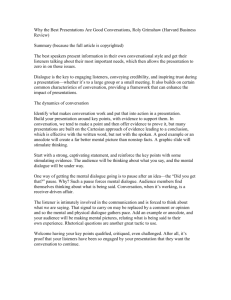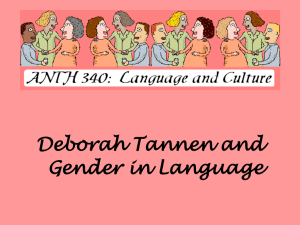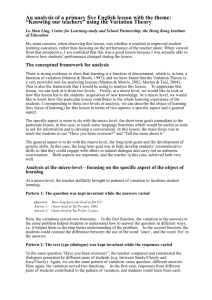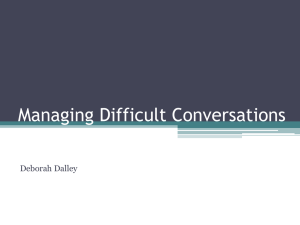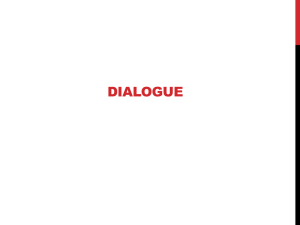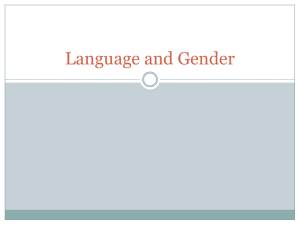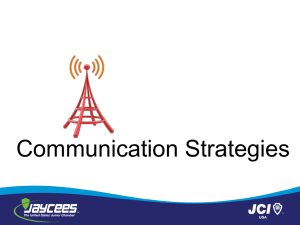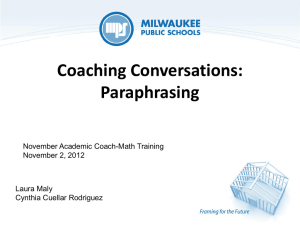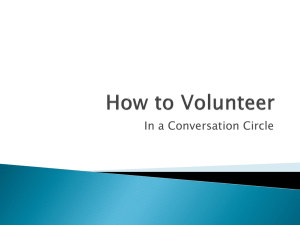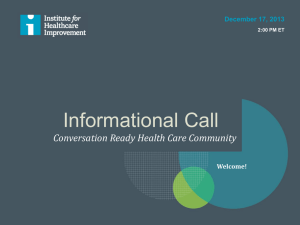Listening and dialogue RA
advertisement
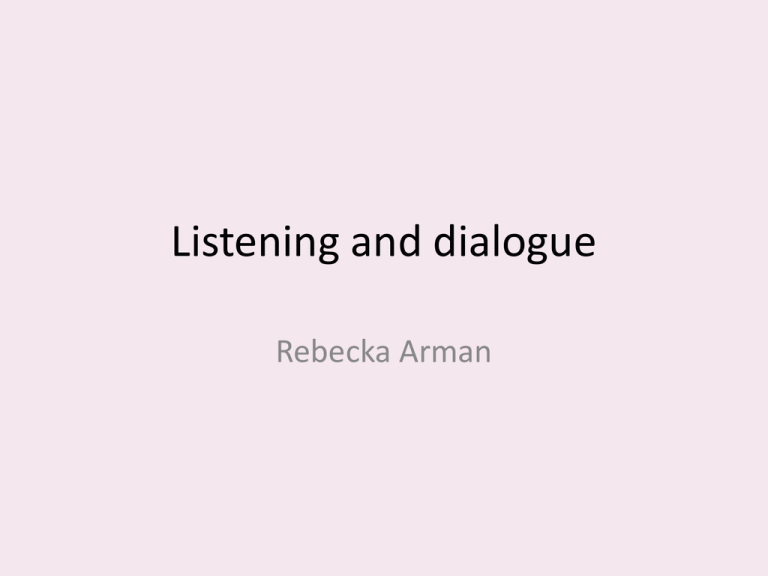
Listening and dialogue Rebecka Arman Four fields of conversation (Isaacs) • Flow dialogue • Politeness • Inquiry 4 3 1 2 • Break through Modes of communication • Serial monologue (phase 1) – Solo advocacy – Making speeches – Maintain a smooth surface (politeness) • Verbal brawling/unproductive discussion (1-2) – Win/lose – No Inquiry – Control Outcome – Soft data, implicit reasoning Modes of communication ctd • Facilitated conversation (phase 2-3) – Guided conversation – Structured Inquiry (AI?) • Skillful conversation (phase 3) – Hard (observable) data – Explicit reasoning – Productive Inquiry Modes of conversation ctd • Reflective dialogue (phase 3) – Restructuring underlying thinking – Clarifies choices – Surfaces deep questions/puzzles • Generative dialogue (phase 4) – Recreates underlying thinking – Transforms tacit thought – Enables wisdom to emerge – Produces insight and compulsion to act Four fields of conversation • Flow dialogue • Politeness • Inquiry 4 3 1 2 • Break through The four player model Move Function: direction Bystand Follow Function: perspective Function: completion Oppose Function: correction Action positions and fears Action intends: But sometimes comes across as: Mover Discipline Commitment Perfection Clarity Impatient Indecisive Scattered Dictatorial Follower Loyalty Service Continuity Compassion Placating Indecisive Wishy-Washy Over accommodating Opposer Courage Protection Integrity Survival Critical Competitive Blaming Contrary Bystander Patience Preservation Moderation Self-Reflection Disengaged Judgmental Deserting Withdrawn Silent When one or more dynamic is missing Intent What can I do? How can I help provide what is missing? Move Jointly design action “I think we should XX, Sarah would you…?” “Sarah, what do you think we should do?” Follow Commit to trying another’s direction “That’s a great idea! How can I help?” “How can we support Peter’s suggestion?” Oppose Raise differences to purposes of testing “An alternative approach might be to…” “Does anyone see anything in this that might not work?” Bystand Test your view of what’s happening “I’ve noticed that we’ve been circling the same topic for some time. Perhaps we want to…” “What are we overlooking?” Four fields of conversation • Flow dialogue • Politeness • Inquiry 4 3 1 2 • Break through Practices for Dialogue (Isaacs) Voice Speaking from one’s deepest self Suspend Listen Stepping back to perceive what is taken for granted To partake of and take part in Respect Honoring and witnessing the legitimacy of another’s stance and point of view Assumption Identification The ladder of inference (Argyris/Senge): Actions (based on beliefs) Adoption of beliefs (about the world) Drawing conclusions Making assumptions (based on meanings) Adding meaning to observation (personal/cultural) Observation/data (experiences) Exercise with Four practices • Think of a recent conversation that you had that was difficult, in some way • Five minutes to write it down: – What you said and what the other(s) said, as you recall it • Work three persons together: – – – – – – – 3 minutes tell each other briefly about the conversations Choose one to work with Decide who is coach and one is observer Tell about the conversation in a little more detail One minute silence 7 minutes questions and answers, INQUIRY 7 minutes feed-back from all: what did you learn? When did the conversation open up?
